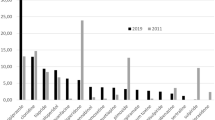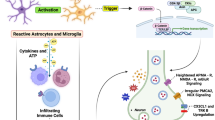Abstract
Tinnitus, ook wel oorsuizen genoemd, is een vooralsnog onbehandelbare gehooraandoening. Een toenemend aantal mensen heeft zodanig last van oorsuizen dat het hun leven voor korte of langere tijd ontwricht. Na uitgebreid medisch diagnostisch onderzoek krijgt de patiënt die lijdt aan tinnitus meestal het advies te leren leven met zijn klacht. Tinnitus is een subjectief gehoord geluid, zonder externe geluidsbron. Het geluid is betekenisloos en resulteert veelal in psychische en somatische lijdensdruk als gevolg van een autonome reactie op de waarneming. Decennia lang werd aangenomen dat oorsuizen zijn oorsprong heeft in een stoornis van het binnenoor. Pas recent wordt meer aandacht besteed aan andere aspecten van deze geluidswaarneming. Dit artikel heeft als doel een hypothese op te stellen over de oorzaak van tinnitus, die als basis zou kunnen dienen voor curatieve behandeling van het symptoom.



Similar content being viewed by others
Literatuur
Chrousos, G.P. & Stratakis. Neuroendocrinology and pathofysiology of the stresssystem. In: Annals of New York Academy of Science, volume 771: Stress, basic mechanisms and clinical implications.
Chrousos, G.P. (1995). The hypothalamic-pituitary-adrenal axis and immune mediated inflammation. New Engl. J. Med. 332:1351-1362.
Cranenburgh, B. van. (1998). Neurowetenschappen, een overzicht. Elsevier/De tijdstroom, Maarssen.
Cranenburgh, B. van. (1999). Neuropsychologie, over de gevolgen van hersenbeschadiging. Elsevier/De tijdstroom, Maarssen.
Eggermont, J. (2003). Central Tinnitus. Auris, Nasus, Larynx, volume 30, supplement 1, 7-12.
Jeanmonod, M., Magnin, M. & Morel, A. (1996). Low threshold calcium spike bursts in the human thalamus. Common physiopathology for sensory, motor and limbic positive symptom. Brain 119, 363-375.
Patuzzi, R. (2002). Outer haircells, ep regulation and tinnitus. In: Seventh Intern. Tinnitus Seminar.
Staak, C.P.F. van der, Keijsers, G.P.J. & Hoogduin, C.A.L. (2001). In: Psychologische interventies bij werkgerelateerde problematiek. Wetenschappelijke uitgeverij Cure & Care publishers, Zeist.
Stegeren, A. van & Everaerd, W. (2003). Amygdala in beeld ’ de emotionele kameleon. Neuropraxis 6: 193-199.
Verschuure, J. (1978). Auditory excitation patterns. The significance of the pulsation threshold method for the measurement of auditory nonlinearity (Dissertatie).
Vingerhoets, G., & Lannoo, E. (1998). Handboek neuropsychologie, de biologische basis van het gedrag. Acco Leuven/Amersfoort.
Wagenaar, O.V.G. (2003). Whiplash, een audiologische benadering. Neuropraxis 1: 10-13.
Author information
Authors and Affiliations
Corresponding author
Rights and permissions
About this article
Cite this article
Wagenaar, O. Tinnitus aurium (oorsuizen) ’ een neuropsychologisch verklaringsmodel. NEPR 10, 17–21 (2006). https://doi.org/10.1007/BF03079073
Issue Date:
DOI: https://doi.org/10.1007/BF03079073




